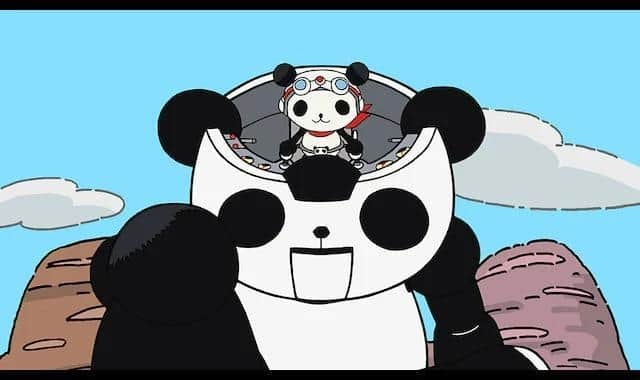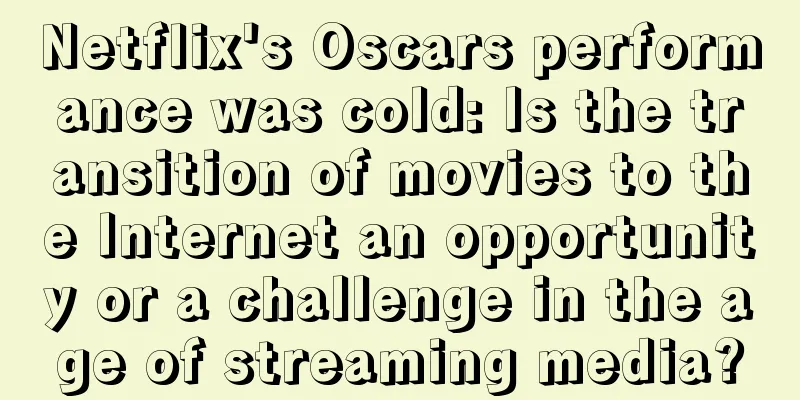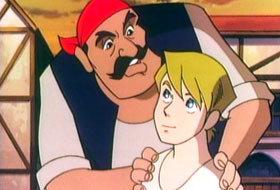UFO Warrior Daiapolon: Reevaluating a nostalgic robot anime

UFO Warrior Daiapolon: A monumental example of giant robot anime from the 70s■ Public MediaTV anime series ■ Original MediaAnime Original ■ Broadcast periodApril 6, 1976 - February 24, 1977 [UFO Warrior Daiapolon] April 6, 1976 - September 28, 1976 Broadcast every Tuesday from 19:00 to 19:30 Total number of episodes: 26 [UFO Warrior Diapolon II Action Series] October 7, 1976 - February 24, 1977 Broadcast every Thursday from 19:00 to 19:30 Total number of episodes: 21 ■Broadcasting stationTBS, Tokyo 12 Channel (now TV Tokyo) ■Frequencieshalf an hour ■ Number of EpisodesEpisode 47 ■Original StorySatoshi Karaya and Shigeru Tsuchiyama ■ Production[UFO Warrior Daiapolon] Aiken, Tokyu Agency, TBS [UFO Warrior Diapolon II Action Series] Aiken Tokyu Agency ■Works©1976 Tetsu Kariya and Eiken ■ StoryThe Dazaan army, which came from outer space to obtain the energy that holds great power, invades the Earth. 16-year-old Takeshi learns that he is not an Earthling but the prince of the planet Apollon, and that he has the key to the energy, "Key Energy," inside him. Determined to fight against the Dazaan army that once destroyed the planet Apollon, Takeshi merges with Daiapolon with the power of Key Energy and fights against the Dazaan army. ■ExplanationThis is the first giant robot anime that Eiken has worked on since "Tetsujin 28". It cleverly incorporated the trends of the time, including the title "UFO (flying saucer)" which had become a social phenomenon, and introduced the familiar team-fighting plot from special effects superhero films, using the setting of "5 UFO boys". In addition, the concept of "combination (combination + transformation)" in which a giant robot formed by combining three robots becomes one with the human protagonist is a unique setting seen only in this work. As related products were also popular, "UFO Warrior Diapolon II Action Series" was aired the week after this work ended. However, it was not a sequel, but rather the first work was changed in setting and new scenes were added, and the broadcasting station was also changed, which was quite unusual. ■Cast・Takeshi/Akira Murayama ・Goro/Keisuke Yamashita ・Matsuo/Sachiko Chijimatsu ・Miki/Kazue Komiya ・Hideki/Kiyoshi Komiyama ・President Dazhan/Shuya Sugita ・Giranik/Shozo Iizuka ・Hido/Setsuo Wakui Narrator: Osamu Ichikawa ■ Main staffOriginal story by Tetsu Kariya and Shigeru Tsuchiyama ・Chief Director/Tatsuo Ono ・Character design: Toyoo Ashida ・Mechanical design: Kunio Takahashi Chief animation director: Toshitaka Tsunoda ・Art Director: Toshihiro Osumi ・Music: Masahisa Takeichi ■ Main CharactersTakeshi The leader of the UFO Boys. His battle costume is red and his uniform number is 10. Goro Nicknamed Goroyan. A strong leader. His battle costume is blue and his uniform number is 66. Matsuo Nicknamed Chocomatsu. A short, spirited boy. His battle costume is yellow and his uniform number is 22. ・Miki Nicknamed Mikippe. The only girl on the team. Her battle costume is pink and her uniform number is 00. ・Hideki Nicknamed Hakase. An intellectual character who wears glasses. His battle costume is white and his uniform number is 99. ■ Main robot items・Diapolon The three Apollo robots and Takeshi "combine" to complete the transformation. ・Apollon Header It becomes the head and chest of Diapolon. It also stores Takeshi. Apollo Trango When combined, this robot becomes Diapollon's chest cover and both arms. ・Apollo Regga These become the legs. Unnecessary parts such as arms and legs can be stored in all three bodies. ■ Theme songs and music・OP ・"UFO Warrior Daiapolon" Lyrics by Masayuki Yamamoto ・Composer: Masayuki Yamamoto ・Song by Masato Shimon ・ED ・"UFO Boys Club" Lyrics by Masayuki Yamamoto ・Composer: Masayuki Yamamoto ・Song by Masato Shimon ■Detailed evaluation and recommendation■ Background and influence of the workThe 1970s was a time when giant robot anime was booming, and among them, "UFO Warrior Daiapolon" is particularly noteworthy. This work, created by Eiken, skillfully incorporated the UFO boom, which was a social phenomenon at the time, and further combined elements of special effects superhero teams to capture the hearts of children. In particular, the concept of "fusion" had a major impact on later robot anime, and many works are said to have used this idea as a reference. Sales of related products were also very good, with toys and character goods selling like hotcakes. Diapolon figures in particular were extremely popular among children, and many children became fascinated with playing with them. Due to the success of these product developments, the "UFO Warrior Diapolon II Action Series" was launched immediately after the broadcast ended, which must have been a great delight for viewers at the time. ■ Story and CharactersThe story depicts the exploits of Takeshi and the UFO Boys as they fight against the Dazaan Army, which is trying to invade the Earth. The fact that Takeshi is the prince of the planet Apollon gave viewers a fresh surprise. Also, the scene where Takeshi fuses with Daiapolon using the power of Key Energy captivated viewers as a highlight of each episode. The characters were also unique, and it was impressive to see the members of the UFO Boys' Club, including Takeshi, fighting as one despite their different personalities. In particular, Takeshi's leadership, Goro's strength, Matsuo's energy, Miki's bravery, and Hideki's knowledge resonated deeply with viewers. Furthermore, the characters of the enemy, such as President Dazhan, Giranik, and Hidou, were also unique, and the show was designed to keep viewers from getting bored. ■Animation and MusicThe animation was produced using the latest technology of the time. The Diapollon fusion scene in particular captivated viewers with its detailed drawings and dynamic movements. The mechanical design was also done by Kunio Takahashi, and was realistic and sophisticated, creating a strong visual impact. The music also played an important role, with the theme song "UFO Warrior Daiapolon" and the ending song "UFO Shounendan" deeply imprinted in the hearts of viewers with Masato Shikado's powerful voice and Masayuki Yamamoto's catchy melody. These songs continue to be loved by fans even today. ■ Recommendation points"UFO Warrior Daiapolon" is a monumental giant robot anime of the 1970s, and its innovative setting, attractive characters, and exciting storyline continue to attract many fans to this day. In particular, the concept of "fusion" is a unique appeal not found in other robot anime, and left a strong impression on viewers. In addition, the story, which is set against the backdrop of the UFO boom, reflects the social situation of the time, and is of great historical value. The points that make this work recommended are as follows:
The combination of these elements makes "UFO Warrior Daiapolon" a symbol of giant robot anime from the 70s, and even if you're not a fan, it's a work that you should see at least once. I would especially recommend it to those who like robot anime and special effects squadrons. ■ Related information and recommended worksAfter enjoying "UFO Warrior Daiapolon," why not check out the following related works? These works also allow you to fully experience the charm of giant robot anime.
A giant robot anime created by Go Nagai. It can be said to be a pioneer of combined robots, and like Daia Polon, it is a representative work of the 70s. Another giant robot anime based on Nagai Go's original work. The setting of three robots combining has a similar appeal to the "combination" of Diapolon. A giant robot anime with five pilots. It has something in common with Diapolon in that they fight as a team. Like Dai Apolon, these works are masterpieces of giant robot anime from the 70s, and are must-sees for fans. I hope that through "UFO Warrior Dai Apolon," you will rediscover the charm of robot anime from the 70s. |
<<: The appeal and evaluation of Don Chuck Story [Season 2]: Reevaluating a nostalgic classic anime
>>: GoWapper 5 Godam's Appeal and Evaluation: Reevaluating the Nostalgic Special Effects Hero
Recommend
The list of the 34th China Golden Rooster Awards is out! "The Islander" won the Best Story
The closing ceremony of the 34th China Golden Roo...
The appeal and reviews of "Natsuyuki Rendezvous": A moving story and deep characters
"Natsuyuki Rendezvous": A story of pure...
Behind-the-scenes special of "The Order of the Samurai" starring Chen Kun and Zhou Xun, with over 2,300 special effects shots
The fantasy film “The Order of the Samurai”, adap...
HBO x DC's new drama "Watchmen" latest trailer criticized for racism
At the recent SDCC 2019 Comic-Con, HBO released t...
Bandai's new MG 1/100 German Angel Gundam is priced at 8,000 yen and has 2 forms
Today (May 13), Bandai released the new MG 1/100 ...
IGN's American TV series "Loki" only rated the fourth episode 5 points, and the video has received 5,000 negative reviews
The fourth episode of the Marvel American TV seri...
The first Chinese trailer for the new sci-fi film "Jeong Yi" directed by "Train to Busan"
The first trailer of the new AI-themed sci-fi fil...
The power of puppets! New characters added to the new TV anime "Puppet Circus"
The TV animation version of "Kume Circus&quo...
Foreign players complain about the "Sonic" movie: It's simply a hedgehog version of Doctor Strange
Last night, the live-action movie "Sonic the...
Cartoonist Ken Akamatsu stressed that not only movie commentaries, but also animation commentaries are illegal
A few days ago, the arrest of the first publisher...
Kyoto Animation's "Miss Kobayashi's Dragon Maid S" TV animation new trailer to be aired in July
The second season of the famous TV animation &quo...
Resident Evil: Infinite Darkness Season 1 IGN 7 points: A step towards success
The first season of Netflix's CG series "...
The emotion and evaluation of "Touch Miss Lonely Yesterday: Since then, you have...": Reevaluation of a masterpiece
The appeal and evaluation of "Touch Miss Lon...
Tom Cruise insists on Val Kilmer returning to play Iceman in Top Gun 2
"Top Gun: Maverick" producer Jerry Bruc...
Appeal and evaluation of the pilot version of "Play with your body"
A comprehensive review and recommendation of &quo...









